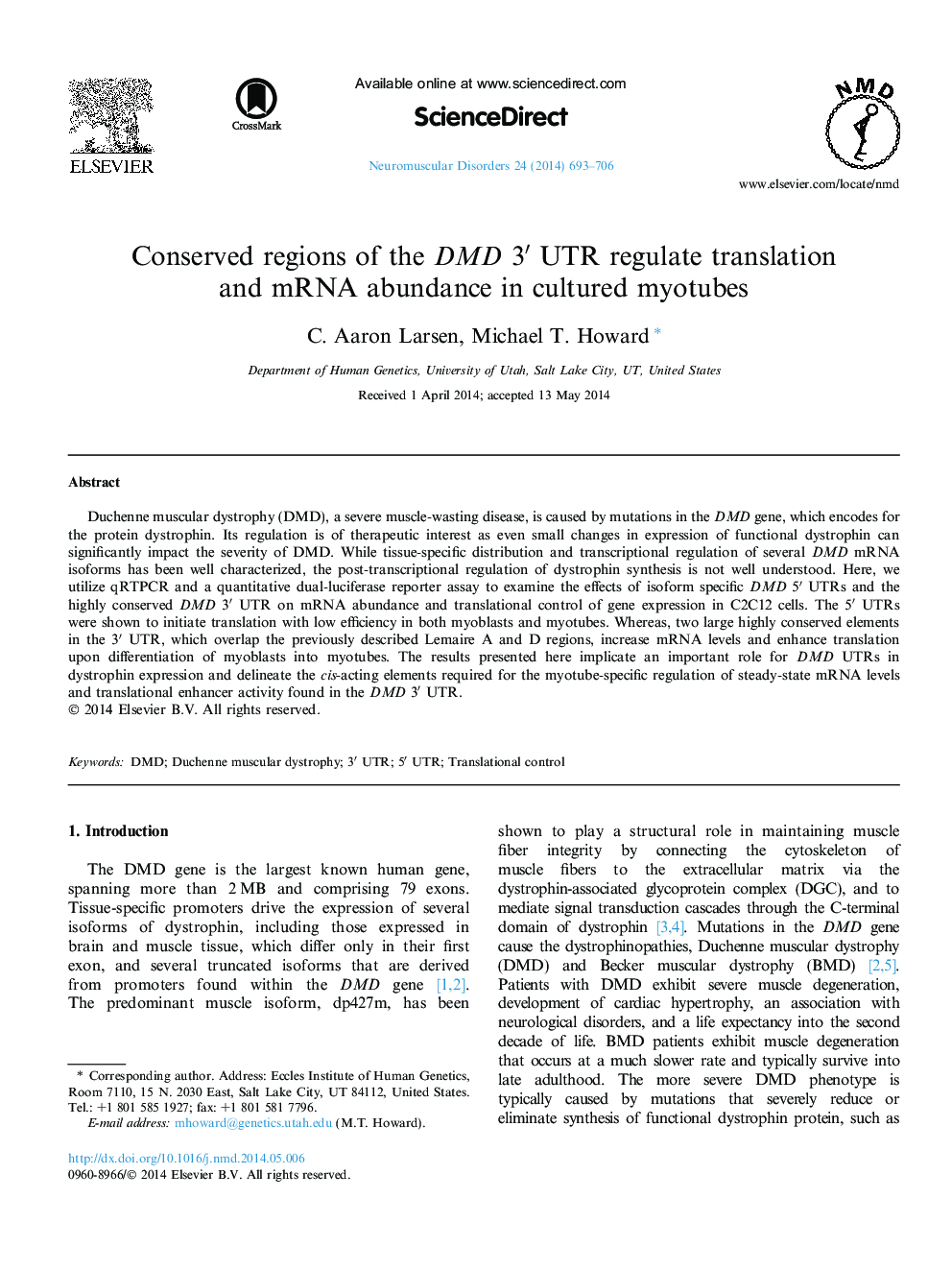| Article ID | Journal | Published Year | Pages | File Type |
|---|---|---|---|---|
| 3079290 | Neuromuscular Disorders | 2014 | 14 Pages |
•The effects of the DMD UTRs on dystrophin expression were examined in C2C12 cells.•DMD 5′ UTRs initiate translation with low efficiency in C2C12 cells.•The DMD 3′ UTR contains highly conserved elements (HCEs).•The DMD 3′ UTR HCEs increase mRNA levels and translation during differentiation.
Duchenne muscular dystrophy (DMD), a severe muscle-wasting disease, is caused by mutations in the DMD gene, which encodes for the protein dystrophin. Its regulation is of therapeutic interest as even small changes in expression of functional dystrophin can significantly impact the severity of DMD. While tissue-specific distribution and transcriptional regulation of several DMD mRNA isoforms has been well characterized, the post-transcriptional regulation of dystrophin synthesis is not well understood. Here, we utilize qRTPCR and a quantitative dual-luciferase reporter assay to examine the effects of isoform specific DMD 5′ UTRs and the highly conserved DMD 3′ UTR on mRNA abundance and translational control of gene expression in C2C12 cells. The 5′ UTRs were shown to initiate translation with low efficiency in both myoblasts and myotubes. Whereas, two large highly conserved elements in the 3′ UTR, which overlap the previously described Lemaire A and D regions, increase mRNA levels and enhance translation upon differentiation of myoblasts into myotubes. The results presented here implicate an important role for DMD UTRs in dystrophin expression and delineate the cis-acting elements required for the myotube-specific regulation of steady-state mRNA levels and translational enhancer activity found in the DMD 3′ UTR.
